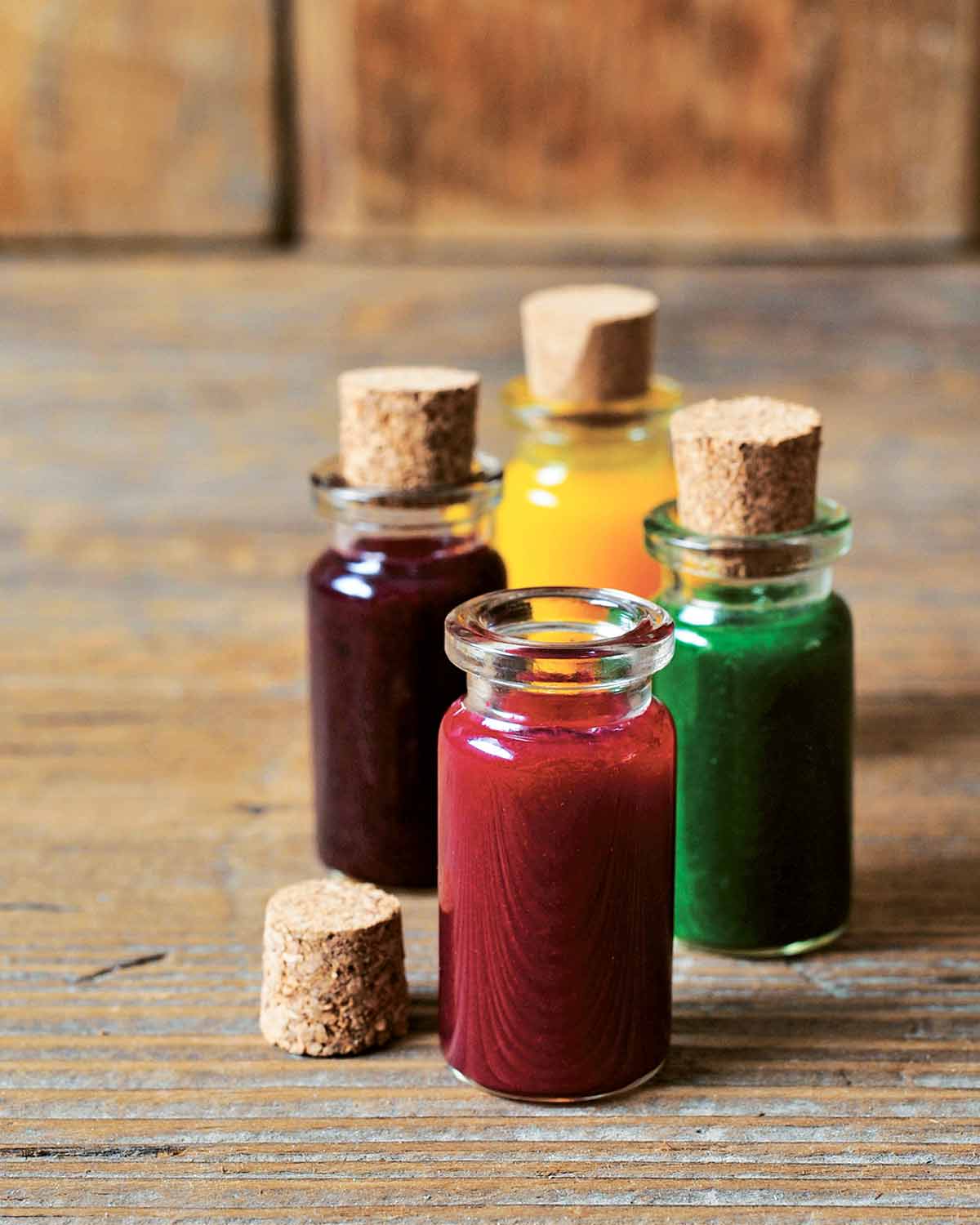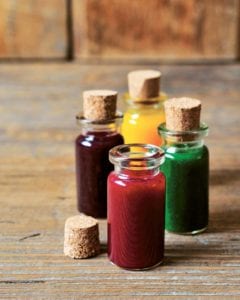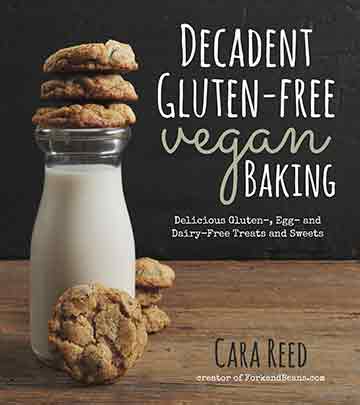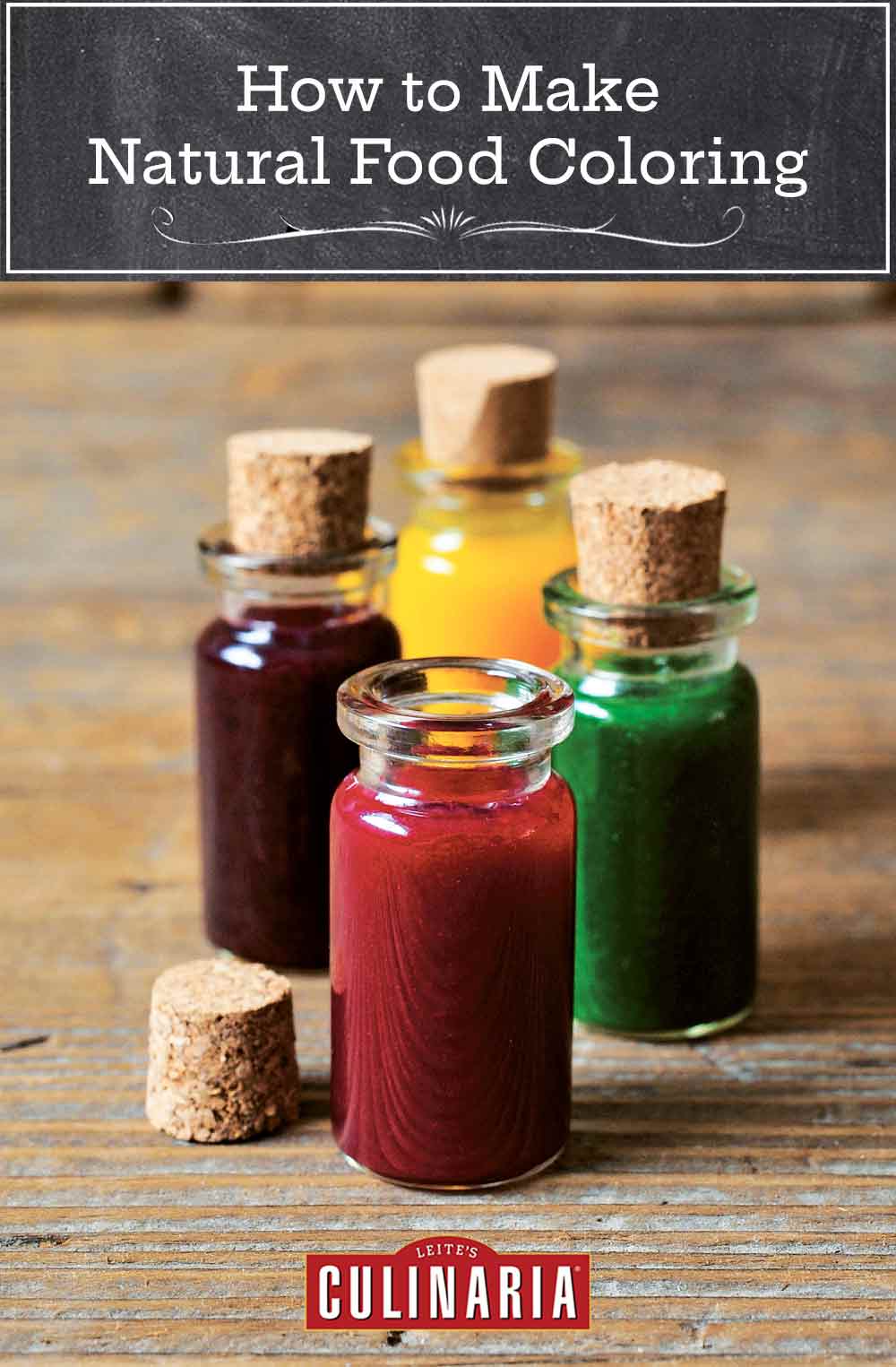
Knowing how to make natural food coloring from scratch is something we’ve been wanting to do for literally years and years and years. And after trying countless different approaches, we finally we have the DIY natural food coloring recipe we’ve been wanting, seeking, and needing. No artificial colors. No preservatives. And no monumental price tag. Just vegetables and fruits and water.–David Leite
Natural Food Coloring FAQs
Keep in mind that when mixed into frostings or icing, natural food coloring will create shades of pastels rather than incredibly vibrant and nearly neon hues. But, on the other hand, these all-natural, one-ingredient colors are kinder and gentler to everyone involved. And there’s something to be said for softness, no?
Yes, to some extent, although it should be minimal. The more food coloring you use, the more noticeable the flavor will be. In some cases, this is desirable, such as with blueberries. However, if the food coloring uses an ingredient that may be off-putting to some, start with a small amount and monitor the flavor.

How To Make Natural Food Coloring
Ingredients
For pink food coloring
- 1/4 cup canned beets, drained
- 1 teaspoon drained beet juice from the can
For yellow food coloring
- 1/4 cup water
- 1/2 teaspoon ground turmeric
For purple food coloring
- 1/4 cup blueberries, fresh or frozen (if frozen, thaw and drain)
- 2 teaspoons water
For green food coloring
- 1 cup spinach, fresh or frozen (if frozen, thaw and drain)
- 3 tablespoons water, plus more as needed
Instructions
- Choose your color below and simply follow the instructions below.
Notes
CHOOSE YOUR COLOR
Pink
In a high-speed blender or food processor, mix the beets and juice together until smooth. Strain if desired. Store in an airtight container for up to 2 weeks in the refrigerator. Add 1 teaspoon to icings, frostings, or batter for starters to impart a pink hue. Add more coloring, if necessary.Yellow
In a small saucepan, boil the water and turmeric for 3 to 5 minutes. Allow to fully cool. Store in an airtight container for up to 2 weeks in the refrigerator. Turmeric can stain, so use a container you don’t mind turning yellow. Add 1 teaspoon to icings, frostings, or batter for starters to impart a yellow hue. Add more coloring, if necessary. [Editor’s Note: Be careful when working with turmeric as it tends to stain whatever it comes in contact with, including countertops and wee fingers.]Purple
In a high-speed blender or food processor, blend the blueberries and water together until smooth. Using a fine-mesh sieve, strain the skins from the mix. Store in an airtight container for up to 2 weeks in the refrigerator. Add 1 teaspoon to icings, frostings, or batter for starters to impart a purple hue. Add more coloring, if necessary.Green
If using fresh spinach, in a small saucepan, boil the spinach in enough water to cover for 5 minutes. Drain, discarding the cooking liquid. If using frozen and thawed spinach, skip to the next step. In a high-speed blender or food processor, blend the spinach and water together until completely smooth. If the mixture clumps or stubbornly refuses to blend, add more water as needed, 1 tablespoon at a time. Strain, if desired, and let cool. Store in an airtight container for up to 2 weeks in the refrigerator. Add 1 teaspoon to icings, frostings or batter for starters to impart a green hue. Add more coloring, if necessary.
Nutrition
Nutrition information is automatically calculated, so should only be used as an approximation.
Recipe Testers’ Reviews
These instructions for how to make natural food coloring are easy to follow and everything came together quickly, each one taking less than 5 minutes (if you don’t count the half hour to allow some of the mixtures to cool). Our color testers included a 10-year-old and an 8-year-old. They swirled the final colors into bright white vanilla yogurt and and the results were delightful. Each color is a pretty hue—soft green, lemony yellow, light purple, and a pale pink that got the most enthusiastic chorus of “Ooooh!” and “Ahhhh!”
With the problems of artificial colorings in our food chain, this natural food coloring recipe was a pleasure to try. For the pink, I believe you can use fresh beets that have been cooked and use the cooking water. For the purple, the total time, including clean up, was just 5 minutes. For the green, I used fresh spinach.












If I wanted use these to make colored ice cubes should I be worried about them changing the taste of the drink as they melt?
Sarah, it would depend on how much of the food coloring you added to the ice cubes. I don’t think you’d need a lot so I doubt that any change in flavor would be noticeable.
I’m planning on using the yellow/turmeric in a cake. Does it have any taste? Will it change the taste of the frosting?
Amber, turmeric does have a bit of an earthy taste, but you will need so little to achieve color that I doubt it will be noticeable in your cake and frosting.
Hi
Would applying these food colourings into ice cream change the overall flavour and taste of the ice cream? If yes at how much of an effect would it have on the ice cream flavour. Each hue that is (pink, blue-purple, yellow)
Itumeleng, it’s hard to say if it would have any impact on the flavor. Typically you only need a very small amount of food coloring, so I wouldn’t expect the flavor of it to be noticeable. However, if you’re aiming to get vibrant color and use a lot of food coloring, you may notice a change in flavor.